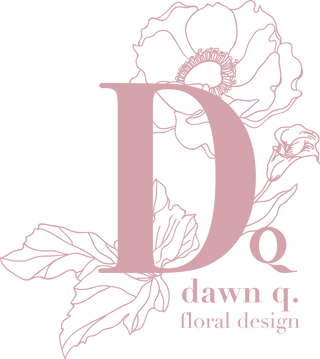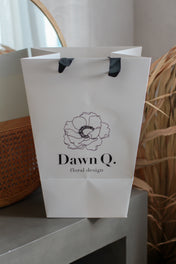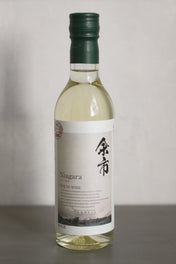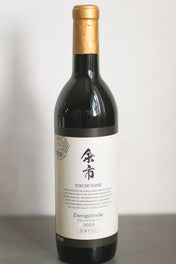Bringing life into your home can be wonderful, whether through the breath of nature with plants or with the unconditional companionship of furry friends. However, sometimes some flora and fauna can’t coexist because certain flowers can be hazardous to domestic animals like dogs and cats — causing issues ranging from vomiting and diarrhoea to even death.
As pet owners, it is our responsibility to be mindful of the plants that can harm their health. To help, we at Dawn Q have put together a list of 10 common flowers that are toxic to pets. We also recommend safe alternatives so you can still infuse your home with the colour and fragrance of beautiful blooms all the same. Learn what they are to create a fresh and pet-friendly home filled with the magic of nature!
1. Lily

Most cat owners are aware of the fatal dangers lilies pose to our feline friends. Its widespread reputation owes to its severely damaging effects — every part of the plant is toxic to them, causing kidney failure, even the water in the vase. Less widely known is that lilies can also be toxic to dogs, though to a lesser extent, inducing symptoms like gastrointestinal issues. Primarily, it is true lilies and day lilies that are particularly dangerous for cats, including popular varieties like Asiatic lilies, Oriental lilies and Trumpet lilies.
Replace With: Peruvian lilies, which resemble lilies but are not true lilies, are a safer option for pets. Only when these flowers are ingested in a large amount do they cause mild stomach upset.
2. Tulip

Tulips are adored for their unusual but elegant appearance and vivid colours. Surprisingly, these popular blooms are members of the lily family and share the same poisonous quality. The entire plant is toxic to dogs and cats, with the highest concentration of toxins in the bulb. Keep tulips out of reach to avoid irritation to their mouths and oesophagus, as well as bigger complications like liver disease and heart problems.
Replace With: Lisianthus, sporting bell-shaped blossoms that can be equally charming to tulip lovers, but certified pet-safe.
3. Azalea

These gorgeous springtime flowers are frequently used in bridal bouquets to symbolise passion and gentleness. But rethink incorporating them into arrangements if you’re planning to bring them home where your four-legged friends live. Azaleas, which include thousands of cultivars, are toxic to dogs, cats and even horses. Pets that nibble on any part of the azalea can experience symptoms from drooling and weakness to seizures and cardiac failure when ingested in large quantities.
Replace With: Camellias, which feature radiant and layered blooms that can be safely enjoyed around both dogs and cats.
4. Sweet Pea

Delicate sweet peas are hard to resist with their butterfly-shaped blooms and intense fragrance, described as a cross between orange blossoms and hyacinths. Despite their incredible appeal, it’s important to keep these trailing flowers away from pets, as they can cause serious health issues. Ingestion of sweet peas can lead to symptoms such as gastrointestinal upset, weakness, seizures, and difficulty breathing, which can be fatal.
Replace With: String of hearts, climbing plants that produce dainty pink and purple tubular flowers, sans the toxicity to dogs and cats.
5. Cyclamen

As hardy perennials that thrive in a little shade, cyclamen have become popular as reliable and easy-to-care-for houseplants. They also provide great ground cover during spring and winter. Unfortunately, cyclamen contain terpenoid saponins, compounds that help plants fight off pests but can be problematic for pets. Eating cyclamen, especially the tubers, can lead to vomiting, diarrhoea, abnormal heartbeats, seizures and even death.
Replace With: Spider plants, which spread out gracefully in containers and are safe for both dogs and cats.
6. Bird of Paradise

Also referred to as crane flowers, birds of paradise are captivating with their exotic, tropical display. What’s not to love about their watercolour blend of orange, blue and purple hues? Perhaps it’s more about the seeds that contain tannins, or the hydrocyanic acid within their leaves. Since these “birds in flight” don’t move, best keep your fluffy buddies away to prevent digestive issues, tremors, breathing problems and more.
Replace With: Orchids, showcasing a similar sophisticated silhouette, while being easier to maintain — a win-win for all!
7. Hyacinth

Hyacinths are spring-flowering plants that grow tall, dense clusters of bell-shaped flowers. You may also recognise them for their distinctive scent, often said to be a mixture of green, floral and spicy. Sadly, hyacinths are toxic to dogs and cats, containing compounds such as alkaloids and saponins, which can cause drooling, vomiting, abdominal pain, and weakness if ingested. Additionally, contact with hyacinths can lead to skin irritation, including redness and itching.
Replace With: Snapdragons, unique flowers with vertical spikes that come in a rainbow of colours, just like hyacinths. The boisterous snapdragons are considered non-toxic to both dogs and cats.
8. Amaryllis

Amaryllises flourish in compact pots, making them excellent for homes with limited space. Blooming in dramatic red, orange, and more, sometimes even with stripes, these flowers have been compared to lilies for their regal and almost trumpet-shape appearance, but with a distinct pop of colour. Nevertheless, amaryllises share the similar fate of being toxic to dogs and cats. The harmful chemical, lycorine, can be found in stem, leaves, petals, and especially the bulb.
Replace With: African violets, offering striking foliage that make garden and houseplant classics thanks to their unfussy requirements for moisture and sunlight.
9. Dahlia

Bushy and luscious dahlias are native to Mexico and Central America, where they flourish in abundant direct sunlight. Prized as much in the garden as they are as cut flowers, dahlias have come to represent a range of emotions and sentiments, including beauty, love, strength, dignity and creativity. However, dahlias are acknowledged to be toxic to dogs and cats, presenting less severe signs such as mild gastrointestinal upset and mild dermatitis. Both consumption and exposure can cause dahlia poisoning.
Replace With: Zinnias, which are closely related to dahlias and take after their layered and vibrant qualities, but happen to be safe for pets.
10. Chrysanthemum

It’s difficult to imagine, but the flowers behind the tea that soothes and invigorates us can actually be dangerous for our most beloved companions. Chrysanthemums, also known as mums, are generally safe for humans to handle, particularly the Chrysanthemum morifolium and Chrysanthemum indicum varieties. However, these plants contain pyrethrins, sesquiterpene lactones, and other substances that can cause vomiting, diarrhoea, drooling, depression, and loss of coordination in pets. Eating any part of the chrysanthemum can cause these illnesses.
Replace With: Pot marigolds, which are not only bright and cheerful like chrysanthemums, but have also been said to keep certain pests away while remaining relatively harmless.
Visit our Blog for more resources and insights on flowers. Shop at Dawn Q for stunning flower arrangements for a range of special occasions in Singapore, from birthdays and anniversaries to graduations and beyond.
For inquiries on customised pieces, reach out to us directly.




